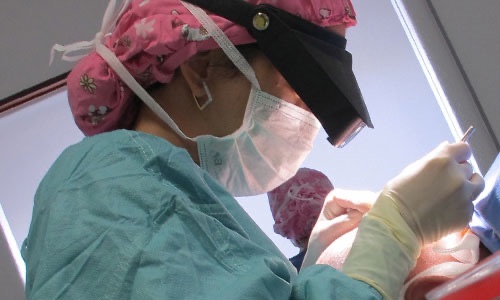With the FUE technique that we use in the Master Group, the correction and camouflage of scars is a solution at your disposal.
In the Master Group, our medical teams are prepared and qualified to camouflage all types of scars (as long as they are in hair areas) and to correct the bad results that may have been the result of a "badly done" hair transplant.
However, camouflaging scars requires some recommendations. Read on.
Scar camouflage is a technique that allows you to camouflage or hide any scars that are on your body, through a hair transplant.
The appearance of scars can occur for a variety of reasons, from physical trauma to a hair transplant using the STRIP technique (or band). In between, we also find some surgeries such as lifting, or even a bad result from other transplants that require the camouflage of scars.
Whatever the case may be, these scars are most likely to be not only visible, but also unaesthetic.
Naturally, this type of scar causes discomfort and can even affect your self-esteem and confidence on a daily basis.
However, if this scar is located on an area of the body with hair or hairs, hair transplantation may be the best solution for scar camouflage.
Scar camouflage works exactly like a FUE hair transplant.
Only when the scar is in an area with hair or hairs, its camouflage becomes possible in the Master Group. Using the FUE technique, we perform a hair transplant to the affected area and camouflage the scar.
However, not all scars can be camouflaged.
In order to be able to start the scar camouflage process, the scar in question must not be too extensive in the first place. At the same time, it is also essential that the scar area has an adequate level of blood supply.
Furthermore, hair transplantation for scar camouflage is also contraindicated for scars resulting from inflammatory and autoimmune diseases.
In any case, an evaluation consultation is always important. These and other factors are duly evaluated by our medical team during the first consultation, in order to the feasibility of the hair transplant to the scar area.

After a hair transplant using the strip technique - STRIP technique - it is common for the scar resulting from the procedure to be quite visible. In this sense, it is possible to apply scar camouflage in order to correct the results of other transplants.
Remember that the hair transplant, when well performed, presents absolutely natural and satisfactory results for the patient, namely at the aesthetic level.
When this doesn't happen, whether due to a visible scar, a less than aesthetic result, or an artificial aspect, scar camouflage may also be the solution.
How can you tell that a Hair Transplant was badly done? There are two essential factors:
Unnatural front lines
Front lines too low, with little irregularity or completely straight, with obvious asymmetries, presence of tufts, etc.
Low density
Situation in which the scalp is visible because the number of transplanted hairs was insufficient (not good coverage) and the hair density seems to be minimal.
Camouflaging scars and correcting other transplants require techniques that our team has mastered. The truth is that unsatisfactory results can occur.
Some of the failures of other procedures that require the camouflaging of scars and the correction of other transplants tend to be the result of unprofessional or inexperienced work that may not be properly certified.
At the same time, some of the most affordable procedures offered by the market are directly associated with the hours used to perform them. In other words, a lower price sometimes means ruling out the time needed for a thorough and careful surgery, such as the one the FUE Technique requires.
In addition to scar camouflage, some other hair transplant correction methods include:
Removal of clumps
Mainly along the frontline, with the redistribution of the transplanted hair, in order to return it to its natural shape. The removal is done with "punches" of up to 1mm in diameter. In certain situations hair removal can be done by laser.
Hair Transplant
To increase density in cases that need reinforcement.
Camouflage of scars
by transplanting hair into the scar area. In more serious cases it is possible to remove the scar or camouflage it through dermopigmentation, a technique that uses the same principles as tattooing for scar camouflage, but not only.
Talk to us. We are sure that we will be able to offer you the solution you need, whether for scar camouflage or to correct the results of other transplants.